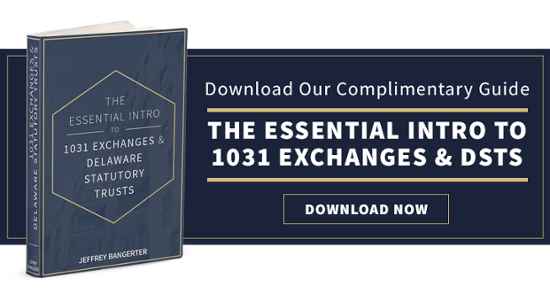A DST’s sponsor is responsible for finding and acquiring properties, then packaging them for investment. While the trust itself retains ownership of the underlying property, investors participate by purchasing fractional ownership interests in the trust.
There are many different types of DSTs, with some owning only a single property while others hold a portfolio of properties. For example, one DST may hold a single large retail space or industrial park while another may hold a portfolio of properties such as hotel chains, apartment complexes, or self-storage facilities. While many multi-property DSTs focus on a single type of property, such as retail or industrial buildings, it is also possible for a DST to hold a variety of property types.
The number and type of properties held by the DST can impact everything from diversification opportunities to rules regarding 1031 exchange identification and tax filing requirements. Following, you’ll find a look at some important details DST investors need to know.
Using DSTs for Real Estate Diversification
The variety of different types of DSTs available creates an opportunity for broad real estate diversification. By investing in multiple single-property DSTs, investors may be able to diversify across several different property types and geographical locations. However, many DSTs have minimum investment requirements, which may make proper diversification a challenge unless planning to make a large investment.
Some investors may find it more economical to invest in one or more multi-property DSTs, which have built-in diversification. When choosing this option, it may be possible to achieve greater diversification with a smaller investment.
The best option will depend on several factors, such as investment objectives and the amount one is planning to invest.
1031 Exchange Identification Rules
The IRS allows a DST to be used as a like-kind replacement property in a 1031 exchange. To successfully complete a 1031 exchange, an investor must unambiguously identify one or more replacement properties in writing within 45 days from the sale of the relinquished property. During the identification process, it is required to follow one of the following rules:
- 3-Property Rule - identify up to three potential replacement properties without regard to the property’s total value.
- 200% Rule - identify any number of properties, as long as the combined fair market value doesn’t exceed 200% of the fair market value of the relinquished property
- 95% Rule - identify any number of properties regardless of the aggregate fair market value, as long as at least 95% of the value of the identified properties.
 When identifying a DST that owns multiple properties, it’s common for tax preparers to have different opinions about the proper identification method. Some identify the property based on the dollar amount of the investment or the percentage of the DST purchased. Others prefer to list out the percentage of each individual property, although this is not necessarily required by the IRS.
When identifying a DST that owns multiple properties, it’s common for tax preparers to have different opinions about the proper identification method. Some identify the property based on the dollar amount of the investment or the percentage of the DST purchased. Others prefer to list out the percentage of each individual property, although this is not necessarily required by the IRS.
Whichever option chosen, it’s important to recognize that each property held by the DST counts towards the identification rules. For example, if a single DST that holds four properties would exceed the 3-property rule and an investor would need to adhere to either the 200% Rule or the 95% Rule.
Tax Implications
Multi-property DSTs can also create some tax complications. If a DST has properties in a state that has a state income tax, an investor may need to file a tax return in that state even if they don’t live there. When DSTs own properties in multiple states, it’s possible that an investor may need to file multiple state tax returns. Due to the complexities surrounding DSTs, it’s a good idea to consult with a financial advisor and/or tax.
Considering a 1031 Exchange?
If you’re interested in learning more about the 1031 exchange process, download our complimentary eBook today!





.png?width=273&height=103&name=Brokercheck%20(1).png)

Comments